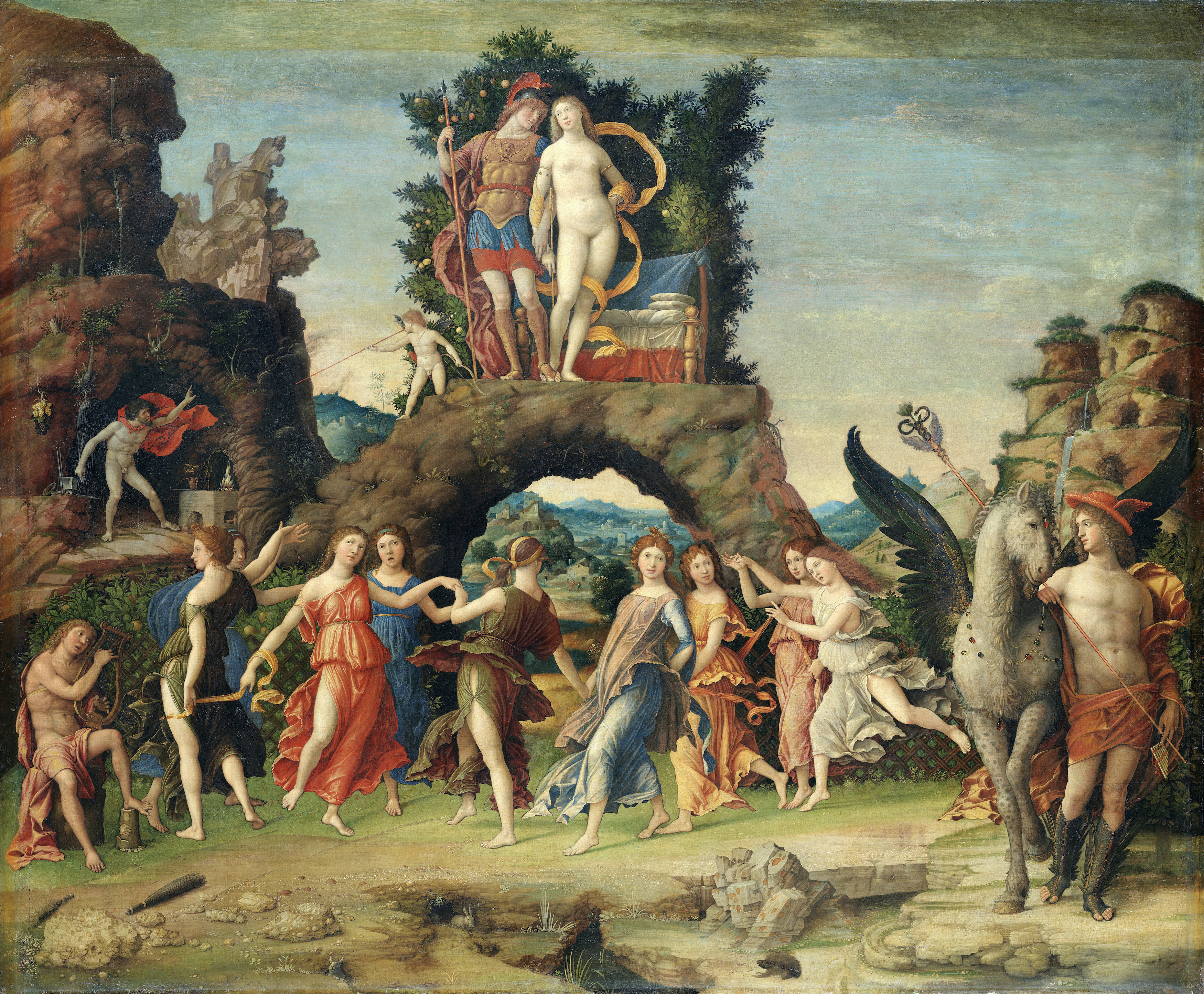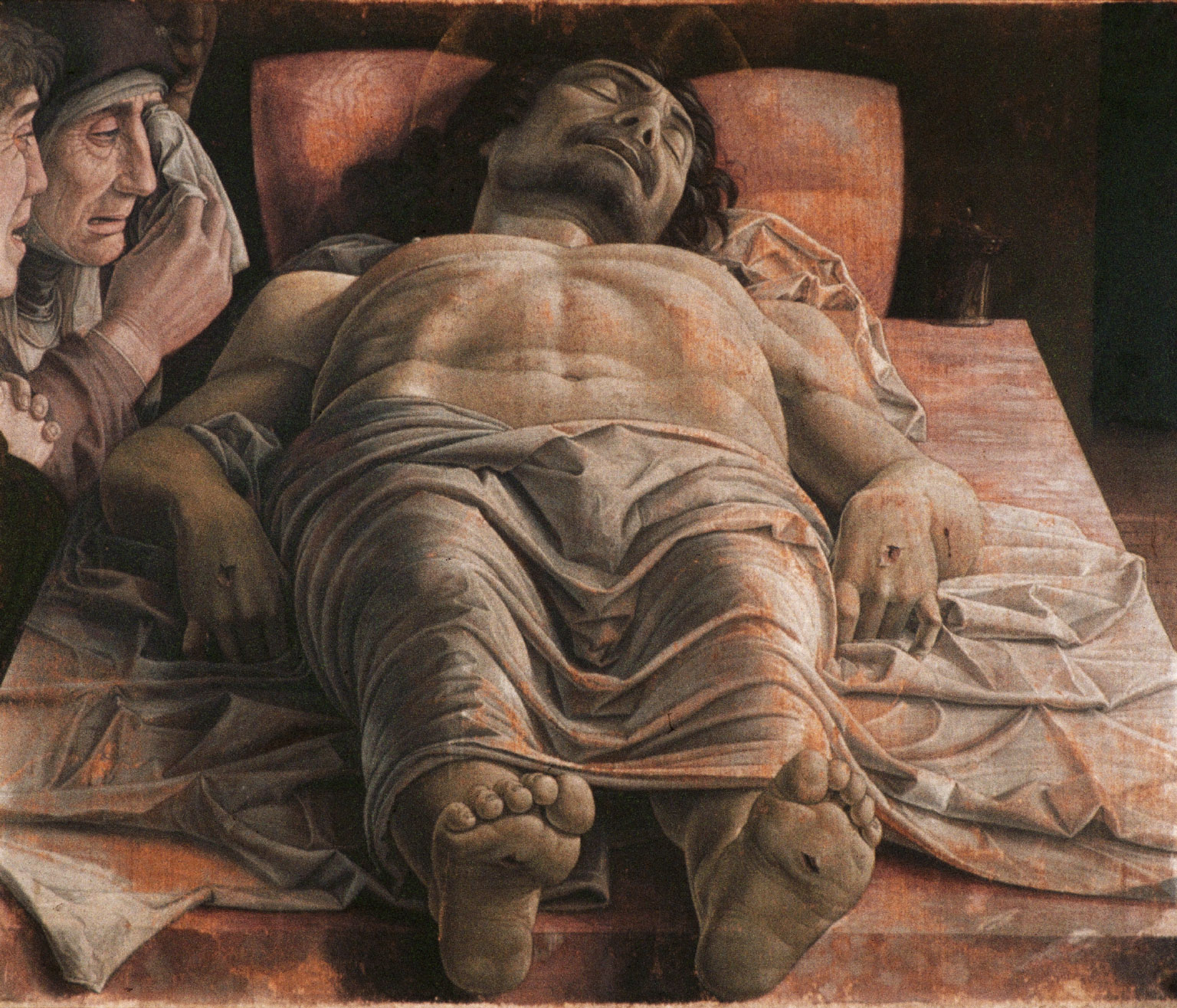So many things are happening in this painting!
In this Renaissance painting we see the Roman gods gathered together. We can quickly spot the most important gods, Venus and Mars. They are shown on a natural arch of rocks in front a symbolic bed; in the background the vegetation has many fruits in the right part (the male one) and only one in the left (female) part, symbolizing the fecundation. The posture of Venus derives from the ancient sculpture. They are accompanied by Anteros (the heavenly love), opposed to the carnal one. The latter is still holding the arch and has a blowpipe which aims at the genitals of Vulcan, Venus' husband, portrayed in his workshop in a grotto. Behind him is the grape, perhaps a symbol of the drunk's intemperance.
The traditional interpretation of the work is based on a late 15th-century poem by Battista Fiera. It is an allegory: Isabella d'Este, who ordered this painting for the famous studiolo in the Ducal Palace of Mantua was depicted as Venus and Francesco II Gonzaga, her husband, as Mars.
In a clearing under the arch is Apollo playing a lyre. Nine Muses are dancing, in an allegory of universal harmony. The touch of Pegasus's hoof (right) can generate the spring which fed the falls of Mount Helicon, which can be seen in the background. The Muses danced traditionally in wood of this mount, and thus the traditional naming of Mount Parnassus is wrong.
Near Pegasus is Mercury, with his traditional winged hat, caduceus (the winged staff with entwined snakes), and messenger shoes. He is present to protect the two adulterers.
You may ask, how it is now in the Louvre's collection? Well, together with the other paintings in the studiolo, it was given to Cardinal Richelieu by Duke Charles I of Mantua in 1627, entering the royal collections with Louis XIV of France. Later it became part of the Louvre Museum.
P.S. Ancient gods' affairs were always very messy ... Read here about the top 5 most badass women of Greek mythology and their representations in art!


 Andrea Mantegna
Andrea Mantegna